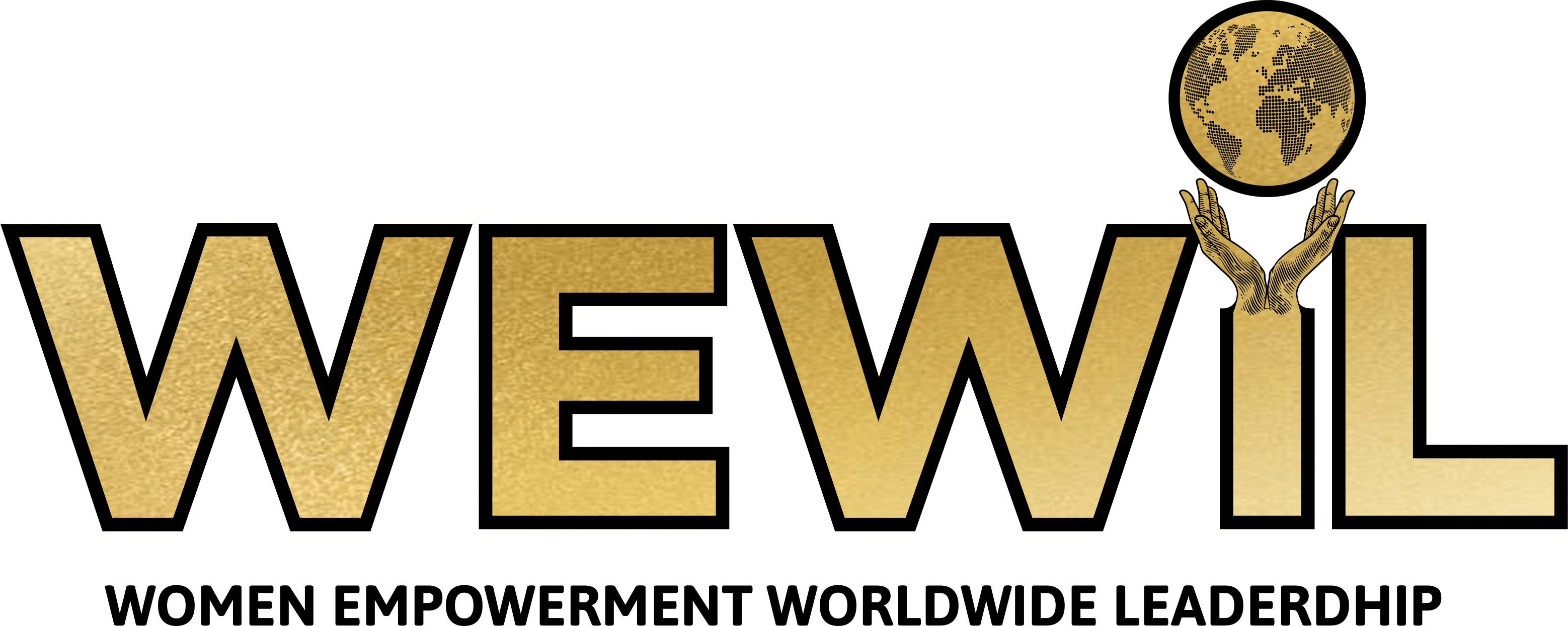Effective communication is a cornerstone of success in both personal and professional life. When it comes to negotiations, whether in the boardroom, at home, or in everyday interactions, being assertive can make a significant difference. Assertive communication empowers individuals to express their needs, boundaries, and desires with clarity and confidence, leading to more successful and mutually beneficial outcomes. In this article, we’ll explore the art of assertive communication and how it can transform your negotiation skills. The Assertive Communication Spectrum Assertive communication falls between two extremes: passive and aggressive communication. Let’s briefly explore these three communication styles: Passive Communication: Passive individuals tend to avoid conflict and often prioritize others’ needs and desires over their own. They may struggle to express their opinions, leading to frustration and unmet needs. Aggressive Communication: On the other end of the spectrum, aggressive communicators are forceful and often disregard others’ feelings and viewpoints. They may come across as hostile or domineering, making cooperation difficult. Assertive Communication: Assertive individuals strike a balance. They express their thoughts, feelings, and needs directly and respectfully, without infringing on others’ rights. Assertive communication is about standing up for yourself while respecting others. Benefits of Assertive Communication in Negotiations Embracing assertive communication can transform your negotiation skills and lead to better outcomes in various aspects of life: Enhanced Understanding: Assertive communication fosters clarity and ensures that all parties involved fully understand each other’s perspectives and expectations. Mutual Respect: Assertive individuals demonstrate respect for themselves and others, creating an atmosphere of mutual respect that encourages collaboration. Conflict Resolution: Assertive communication is a powerful tool for resolving conflicts constructively. It allows individuals to address issues head-on and find mutually beneficial solutions. Effective Problem Solving: In negotiations, assertive communicators are more likely to identify creative solutions that meet the needs and interests of all parties involved. Improved Relationships: Assertive communication builds stronger, healthier relationships because it promotes honesty, trust, and open dialogue. Key Elements of Assertive Communication To become an assertive communicator, consider these key elements: Clarity: Be clear and specific in your communication. State your needs, desires, and boundaries explicitly. Active Listening: Listen actively to others and acknowledge their perspectives. This demonstrates respect and understanding. Confidence: Believe in the validity of your thoughts and feelings. Confidence in your communication fosters assertiveness. Empathy: Understand the emotions and concerns of others. Empathetic communication shows that you value their feelings. Positive Body Language: Non-verbal cues such as eye contact, posture, and gestures play a significant role in assertive communication. Practicing Assertive Communication in Negotiations When it comes to negotiations, whether it’s a salary discussion, a business deal, or a personal matter, here are some tips for applying assertive communication: Prepare: Before entering negotiations, clarify your goals, priorities, and boundaries. This preparation will help you communicate assertively during the negotiation. Use “I” Statements: Express your thoughts and feelings using “I” statements, such as “I feel” or “I need,” to convey your perspective without blaming or accusing. Stay Calm: Maintain emotional composure during negotiations. Deep breaths and composed body language can help you remain calm and assertive. Seek Win-Win Solutions: Focus on finding solutions that benefit all parties involved, demonstrating your commitment to collaboration. Practice Active Listening: Pay close attention to the other party’s words and body language. Reflect their concerns back to show that you’re engaged in the conversation. Respect Differences: Recognize that not everyone will agree with you, and that’s okay. Respect differences of opinion while still asserting your needs. Empower Your Negotiations with Assertive Communication In conclusion, assertive communication is a valuable skill that can empower your negotiations and improve your interactions in all areas of life. By finding the balance between passive and aggressive communication, you can express your needs, boundaries, and desires effectively while respecting the rights and perspectives of others. Embracing assertive communication can lead to more successful, mutually beneficial outcomes and strengthen your relationships. So, remember the power of assertiveness as you navigate the complexities of negotiation, and watch as your communication skills transform your personal and professional life for the better.
Finding Your Rhythm: Creating a Productive Work-Life Balance Routine
In today’s fast-paced world, achieving a harmonious work-life balance can often seem like an elusive goal. The demands of work, family, and personal commitments can leave us feeling overwhelmed and stretched thin. However, finding your rhythm and establishing a productive work-life balance routine is not only possible but crucial for your overall well-being and success. Let’s explore some effective strategies for creating a routine that allows you to excel in both your professional and personal life. Understanding the Importance of Balance Before we delve into creating a productive work-life balance routine, it’s essential to understand why balance matters. A well-balanced life offers numerous benefits, including: Enhanced Productivity: Balancing work and personal life can boost your productivity. When you’re well-rested and fulfilled in your personal life, you’re more energized and focused at work. Reduced Stress: A balanced routine can reduce stress levels, leading to better physical and mental health. Improved Relationships: Spending quality time with loved ones strengthens bonds and fosters healthier relationships. Personal Growth: A balanced life allows time for personal interests, hobbies, and self-improvement, leading to a more fulfilling existence. Tips for Creating a Productive Work-Life Balance Routine Prioritize Self-Care: Start by recognizing that taking care of yourself is not selfish but necessary for overall well-being. Prioritize regular exercise, healthy eating, and adequate sleep. Set Boundaries: Establish clear boundaries between work and personal life. When your workday is over, disconnect from work-related tasks and emails to fully engage in personal activities. Plan Your Day: Use time management techniques like to-do lists or time-blocking to structure your day effectively. Allocate specific blocks of time for work, family, and personal pursuits. Learn to Say No: Overcommitting can lead to burnout. Politely decline additional work or social obligations when your plate is already full. Delegate Responsibility: At work and home, delegate tasks whenever possible. Sharing responsibilities eases the burden and creates opportunities for others to contribute. Use Technology Wisely: Leverage technology to your advantage. Use productivity apps to manage tasks, automate repetitive work, and stay organized. Communicate Openly: Discuss your work-life balance goals with your employer, family, and friends. Effective communication helps them understand your needs and expectations. Make Time for Hobbies: Dedicate time to activities you enjoy outside of work. Whether it’s reading, painting, sports, or music, hobbies can provide relaxation and fulfillment. Quality Over Quantity: Focus on the quality of your time spent with loved ones. It’s not about the quantity of hours but the meaningful connections you build. Regularly Evaluate and Adjust: Periodically assess your routine to ensure it aligns with your evolving priorities. Adjust as needed to maintain balance. Finding Your Unique Rhythm It’s important to remember that there is no one-size-fits-all approach to work-life balance. What works for one person may not work for another. Finding your rhythm requires self-awareness and adaptability. Experiment with different strategies and routines until you discover what works best for you. Additionally, recognize that achieving balance is an ongoing process. Life is dynamic, and your circumstances will change over time. Be prepared to adjust your routine to accommodate new responsibilities, goals, and challenges. Conclusion Creating a productive work-life balance routine is a journey that begins with a commitment to prioritize your well-being. By understanding the importance of balance, setting boundaries, and implementing effective strategies, you can lead a fulfilling life that encompasses both professional success and personal happiness. Remember that finding your rhythm is a personal and evolving process, so be patient and compassionate with yourself as you strive to achieve the harmony you seek.
Navigating Mentorship: Asking the Right Questions for Guidance
Mentorship is a powerful tool for personal and professional growth. Whether you’re a student embarking on a new educational journey or a seasoned professional looking to advance in your career, having a mentor can provide valuable insights, guidance, and support. However, to make the most of this relationship, it’s crucial to ask the right questions. Effective mentorship is a two-way street, and your questions play a pivotal role in shaping the direction and depth of the mentorship experience. The Power of Mentorship Before delving into the art of asking questions, let’s understand why mentorship is so important. A mentor is not just a source of advice but also a role model, a sounding board, and a source of inspiration. They have the knowledge and experience to help you navigate challenges, make informed decisions, and achieve your goals. Mentorship can help you: Gain Perspective: A mentor can offer insights that you may not have considered, helping you see situations from different angles. Learn from Experience: Mentors have typically faced similar challenges in their careers, and their wisdom can save you from making costly mistakes. Build Confidence: Knowing that you have someone experienced to guide you can boost your self-confidence, allowing you to take on new challenges with a sense of security. Expand Your Network: Mentors often have extensive networks, which can be valuable for your personal and professional growth. The Art of Asking Questions Now that we’ve established the importance of mentorship, let’s dive into the art of asking questions that can help you make the most of your mentorship experience. 1. Set Clear Goals: Before you start asking questions, it’s essential to clarify your goals and expectations for the mentorship. What do you hope to achieve? What specific areas do you need guidance in? Having a clear sense of purpose will guide your questioning. 2. Open-Ended Questions: When asking questions, opt for open-ended ones that encourage in-depth conversations. Instead of asking, “How do I do this task?” try, “Can you share your experiences with similar tasks and the strategies you found most effective?” 3. Seek Feedback: Ask your mentor for feedback on your work or decisions. Constructive criticism can be a valuable tool for improvement. Questions like, “What could I have done differently in this situation?” demonstrate your willingness to learn and grow. 4. Request Stories and Experiences: Mentors often have a wealth of anecdotes and experiences to draw from. Encourage them to share their stories related to your challenges. These narratives can provide valuable insights and lessons. 5. Discuss Long-term Goals: Don’t limit your questions to immediate concerns. Explore your long-term career aspirations and ask for guidance on how to work towards them. For example, “What steps can I take to reach a leadership position in the next five years?” 6. Inquire About Their Journey: Mentors have their own journeys and lessons learned along the way. Ask about their career trajectory, challenges they faced, and the mentors who influenced them. This can provide you with valuable context and inspiration. 7. Ask for Resources: Your mentor can recommend books, articles, courses, or other resources that have been instrumental in their own development. Don’t hesitate to ask for these recommendations to expand your knowledge. 8. Seek Guidance on Decision-Making: When you’re faced with a tough decision, consult your mentor. Ask questions like, “How would you approach this decision?” or “What factors should I consider when making this choice?” 9. Express Gratitude: Finally, don’t forget to ask how you can show your appreciation for their guidance. Whether it’s a simple thank you or a more substantial gesture, expressing gratitude is essential in any mentorship relationship. Conclusion Mentorship is a valuable resource that can accelerate your personal and professional growth. To make the most of this relationship, asking the right questions is key. By setting clear goals, using open-ended questions, seeking feedback, and delving into your mentor’s experiences, you can create a mentorship experience that is enriching and rewarding for both you and your mentor. Remember, effective mentorship is a partnership, and your questions are the building blocks of that partnership. So, ask wisely, learn eagerly, and grow abundantly with your mentor by your side.
Navigating Impostor Syndrome: Embracing Your True Worth
Impostor syndrome is a pervasive issue that affects many individuals, even the most accomplished ones. It’s that nagging feeling that you’re a fraud and don’t deserve your achievements. In this article, we’ll dive deep into understanding impostor syndrome and strategies to overcome it. Impostor syndrome often stems from perfectionism and unrealistic expectations of oneself. We’ll discuss the origins of impostor syndrome and how societal and cultural factors can contribute to its development. It’s essential to recognize the signs and symptoms of impostor syndrome in order to address it effectively. Overcoming impostor syndrome involves reframing your thoughts, acknowledging your accomplishments, and learning to accept compliments graciously. Impostor syndrome is a pervasive issue that affects many individuals, even the most accomplished ones. It’s that nagging feeling that you’re a fraud and don’t deserve your achievements. In this article, we’ll dive deep into understanding impostor syndrome and strategies to overcome it. The Weight of Impostor Syndrome Impostor syndrome casts a shadow over many talented individuals, preventing them from recognizing and celebrating their true worth. This phenomenon can be insidious, undermining self-confidence and stifling personal and professional growth. To conquer it, we must first understand its roots. Unmasking Impostor Syndrome Impostor syndrome often stems from perfectionism and unrealistic expectations of oneself. In this chapter, we’ll explore the origins of impostor syndrome and how societal and cultural factors can contribute to its development. The Perfectionism Paradox Perfectionism, while often seen as a positive trait, can be a breeding ground for impostor syndrome. We’ll examine the paradox of perfectionism and its connection to feelings of fraudulence. The Cultural Context Impostor syndrome isn’t solely an individual issue; it’s also influenced by the culture and environment in which we operate. We’ll discuss how cultural norms and workplace dynamics can exacerbate impostor feelings. Recognizing Impostor Syndrome To overcome impostor syndrome, you must first recognize its signs and symptoms in your own life and mindset. This chapter will help you identify when impostor syndrome is at play. The Telltale Signs We’ll outline common signs of impostor syndrome, such as self-doubt, downplaying achievements, and attributing success to luck. Recognizing these patterns is the first step toward conquering impostor syndrome. Strategies for Overcoming Impostor Syndrome Now that we understand the beast, it’s time to tame it. In this chapter, we’ll provide practical strategies and techniques to help you conquer impostor syndrome and embrace your true worth. Reframing Your Thoughts: Impostor syndrome often thrives on negative self-talk. We’ll explore methods to reframe your thoughts and replace self-criticism with self-compassion. Acknowledging Your Accomplishments:Learning to acknowledge and internalize your achievements is crucial. We’ll discuss techniques to track your successes and remind yourself of your capabilities. Accepting Compliments Graciously: Many individuals with impostor syndrome struggle to accept compliments. We’ll provide guidance on gracefully accepting praise and using it to reinforce your self-worth. The Power of Mentorship and Support You’re not alone in your battle against impostor syndrome. In this chapter, we’ll explore the importance of seeking mentorship and support from others who have faced similar challenges. The Role of Mentorship Mentors can offer guidance, encouragement, and perspective. We’ll discuss how a mentor can help you navigate the waters of impostor syndrome. Connecting with a Supportive Community Finding a community of like-minded individuals who understand your struggles can be immensely comforting. We’ll explore how to connect with such communities and gain strength from shared experiences. Conclusion: Embracing Your True Worth In conclusion, impostor syndrome is a formidable opponent, but with the right understanding and strategies, you can conquer it. By recognizing its signs, reframing your thoughts, and seeking support, you can break free from the grip of impostor syndrome and fully embrace your true worth and capabilities. Remember that your achievements are not accidents, and you are deserving of every success. As you implement the tools and techniques discussed in this article, you’ll embark on a journey of self-discovery and self-acceptance, ultimately realizing the incredible value you bring to the world. It’s time to shine without the burden of impostor syndrome weighing you down.
Unleashing Your Inner Strength: Strategies for Personal Growth
In a world filled with challenges and uncertainties, personal growth and development have never been more important. The journey to self-discovery and unleashing your inner strength is a lifelong process, and in this article, we’ll explore strategies and techniques to help you embark on this transformative journey. Personal growth is about becoming the best version of yourself. It’s about recognizing your potential, setting meaningful goals, and continuously working towards them. One of the fundamental principles of personal growth is self-awareness. Knowing who you are, your strengths, weaknesses, and values is the first step towards personal development. Building resilience is another crucial aspect of unleashing your inner strength. Life is filled with ups and downs, and resilience enables you to bounce back from setbacks and challenges stronger than before. We’ll delve into practical exercises and mindset shifts to enhance your resilience. In a world filled with challenges and uncertainties, personal growth and development have never been more important. The journey to self-discovery and unleashing your inner strength is a lifelong process, and in this article, we’ll explore strategies and techniques to help you embark on this transformative journey. The Imperative of Personal Growth In today’s fast-paced and ever-changing world, personal growth has become not just a desire but a necessity. We often find ourselves juggling various roles and responsibilities, and in the midst of it all, our own personal development can take a backseat. However, investing in your personal growth is the key to unlocking your inner strength and potential. Becoming the Best Version of Yourself Personal growth is about becoming the best version of yourself. It’s about recognizing your potential, setting meaningful goals, and continuously working towards them. To kickstart your journey, you must first understand who you are at your core. Self-Awareness: The Foundation of Personal Growth Self-awareness is the cornerstone of personal growth. It involves deep introspection and an honest assessment of your strengths, weaknesses, values, and beliefs. By knowing who you are, you can chart a path toward personal development that is authentic and aligned with your true self. Building Resilience for Life’s Challenges Life is filled with ups and downs, and your ability to bounce back from setbacks and challenges is a testament to your inner strength. In this chapter, we’ll delve into practical exercises and mindset shifts to enhance your resilience. Embracing Setbacks as Learning Opportunities Resilience isn’t about avoiding difficulties; it’s about facing them head-on and learning from each experience. We’ll explore how to turn setbacks into stepping stones on your personal growth journey. The Power of a Growth Mindset Cultivating a growth mindset is essential for personal growth. It means viewing challenges as opportunities for growth and believing in your ability to develop your skills and talents. We’ll provide actionable steps to adopt a growth mindset in your daily life. Setting Clear Goals for Progress To unleash your inner strength, you need a roadmap. Clear goals provide direction and motivation for your personal growth journey. The Art of Goal Setting We’ll discuss the SMART (Specific, Measurable, Achievable, Relevant, Time-bound) criteria for setting goals that are both challenging and attainable. Whether your goals are related to career, relationships, or personal development, this section will help you define them effectively. Cultivating Self-Compassion In the pursuit of personal growth, it’s easy to be self-critical and set impossibly high standards. Self-compassion plays a pivotal role in maintaining a healthy and sustainable growth journey. Treating Yourself with Kindness We’ll explore the concept of self-compassion and how it differs from self-esteem. Learning to treat yourself with kindness, especially in moments of failure or self-doubt, is a crucial aspect of personal growth. Conclusion: Progress Over Perfection In conclusion, personal growth is not about perfection but progress. It’s a journey of self-discovery, resilience-building, goal-setting, and self-compassion. By implementing the strategies and techniques discussed in this article, you can start unleashing your inner strength and becoming the best version of yourself. Remember that personal growth is an ongoing process, and as you continue to invest in it, you’ll discover a reservoir of inner strength and potential you never knew you had. So, take that first step today and embark on your transformative journey of personal growth.
Leadership Legacy: Honoring the Impact of Inspirational Women
In every corner of the world, women have been breaking barriers, challenging stereotypes, and inspiring change. Their leadership, resilience, and unwavering dedication have left an indelible mark on society, transforming the way we think, work, and live. In this article, we celebrate the remarkable women who have shaped our world and left a lasting legacy of leadership. Malala Yousafzai – The Voice of Education Malala Yousafzai, a Pakistani activist born in 1997, has become a symbol of courage and determination in the fight for girls’ education. At the age of 15, she survived a brutal attack by the Taliban and continued to advocate for education. Malala’s unwavering commitment led to her becoming the youngest-ever Nobel Prize laureate in 2014. Her work with the Malala Fund has empowered girls worldwide to pursue their right to education. Malala Yousafzai Biography Malala Fund Rosa Parks – The Mother of the Civil Rights Movement Rosa Parks, born in 1913, played a pivotal role in the American civil rights movement. Her refusal to give up her bus seat to a white passenger in 1955 sparked the Montgomery Bus Boycott and became a symbol of resistance to racial segregation. Parks’ quiet yet powerful act of defiance catalyzed a nationwide movement for equality and justice. Rosa Parks Biography Montgomery Bus Boycott Indira Gandhi – The Iron Lady of India Indira Gandhi, the first female Prime Minister of India, served from 1966 to 1984 and left an indelible legacy in Indian politics. Her leadership during turbulent times, including the Bangladesh Liberation War and the Green Revolution, transformed the nation. Gandhi’s commitment to social justice and women’s empowerment continues to inspire leaders worldwide. Indira Gandhi Biography Green Revolution in India Jane Goodall – Champion of Conservation Dr. Jane Goodall, born in 1934, is a world-renowned primatologist and conservationist. Her groundbreaking research on chimpanzees in Tanzania redefined our understanding of primates and human-animal relationships. Goodall’s work paved the way for conservation efforts worldwide and inspired a new generation of environmental leaders. Jane Goodall Institute National Geographic – Jane Goodall Conclusion The impact of these inspirational women extends far beyond their lifetimes. Their courage, determination, and leadership have set the stage for progress, equality, and positive change. As we honor their legacies, let us also recognize that the journey toward a more equitable and just world is ongoing, and each of us can contribute to this noble endeavor. In celebrating these women, we are reminded of the boundless potential for leadership in every individual, regardless of gender. Their stories serve as a testament to the enduring power of resilience and determination, encouraging us all to make our mark on the world and leave behind a lasting leadership legacy.
Pioneering Voices: Women Who Transformed Traditional Industries
Throughout history, women have consistently shattered stereotypes and barriers to make their mark in various fields. While many may associate the empowerment of women with recent years, there is a long and storied history of women who transformed traditional industries. These remarkable women defied societal norms and made significant contributions, forever altering the landscape of their respective fields. In this article, we celebrate some of these pioneering voices who broke new ground and paved the way for generations of women to come. Ada Lovelace – The Mother of Computer Programming In the 19th century, when the field of computer science was still in its infancy, Ada Lovelace emerged as a trailblazer. Born in 1815, Lovelace is best known for her work on Charles Babbage’s Analytical Engine, a mechanical general-purpose computer concept. Lovelace’s groundbreaking contribution was her realization that this machine could do more than simple calculations; it could be programmed to perform any task. Her notes on the Analytical Engine included an algorithm for calculating Bernoulli numbers, widely regarded as the world’s first computer program. Lovelace’s visionary insights laid the foundation for modern computer programming and earned her the title of the “first computer programmer.” Today, her pioneering spirit continues to inspire women in the tech industry. Biography: Ada Lovelace Biography Marie Curie – The Radiant Pioneer Marie Curie, born in 1867, made groundbreaking contributions to the fields of physics and chemistry. She discovered two elements, polonium and radium, and conducted pioneering research on radioactivity. Curie was not only the first woman to win a Nobel Prize but also the first person to win Nobel Prizes in two different scientific fields (Physics in 1903 and Chemistry in 1911). Her relentless pursuit of knowledge led to transformative breakthroughs in understanding the properties of radioactivity, which ultimately laid the groundwork for modern radiology and cancer treatment. Marie Curie’s legacy continues to inspire women in science, encouraging them to break barriers and pursue their passions. Biography: Marie Curie Biography Additional Reading: Marie Curie – A Life of Discovery Amelia Earhart – The Sky’s No Limit In the early 20th century, aviation was a male-dominated industry, but Amelia Earhart defied the odds. Born in 1897, she became the first woman to fly solo across the Atlantic Ocean in 1932. This daring achievement was just one of many for Earhart, who set numerous speed and altitude records during her career. Beyond her remarkable feats as a pilot, Earhart played a vital role in advocating for women in aviation. She co-founded The Ninety-Nines, an organization dedicated to advancing women in aviation, and her passion for flight continues to inspire female pilots worldwide. Biography: Amelia Earhart Biography Additional Reading: Amelia Earhart – Aviation Pioneer Coco Chanel – The Fashion Revolution Coco Chanel, born in 1883, transformed the world of fashion by challenging the conventions of her time. In an era when women’s fashion was restrictive and uncomfortable, Chanel introduced a new vision of elegance and practicality. She pioneered the use of jersey fabric in women’s clothing, freeing women from the constraints of corsets and heavy fabrics. Chanel’s innovative designs, such as the little black dress and the iconic Chanel suit, became timeless classics. Her contributions to fashion revolutionized the industry and continue to influence designers to this day. Biography: Coco Chanel Biography Additional Reading: Coco Chanel – A Fashion Icon Conclusion These remarkable women shattered glass ceilings, challenged societal norms, and transformed traditional industries. Their pioneering spirits and unwavering determination continue to inspire women around the world to pursue their passions and break new ground in their chosen fields. As we celebrate the achievements of these pioneering voices, let us remember that their legacies serve as a testament to the boundless potential of women in every industry. By recognizing their contributions, we can continue to pave the way for future generations of women to make their mark on the world.
From Startup to Global Impact: Inspiring Women Entrepreneurs
In the ever-evolving landscape of entrepreneurship, women have been breaking barriers, shattering glass ceilings, and making waves across industries. These inspiring women entrepreneurs are not only challenging the status quo but also leaving an indelible mark on the global business landscape. In this blog post, we will delve into the stories of some remarkable women who started as entrepreneurs and have since achieved global impact through their innovative ventures. Oprah Winfrey – Media Mogul Oprah Winfrey’s journey from a local radio host to a global media icon is nothing short of legendary. She began her career in media in 1976, and her talk show, “The Oprah Winfrey Show,” became a cultural phenomenon, reaching millions of viewers worldwide. Oprah’s business empire extends beyond television, with her own television network, OWN, and various philanthropic efforts. Her influence on entertainment, literature, and culture has made her a true global icon. Read More about Oprah Sheryl Sandberg – Tech Trailblazer Sheryl Sandberg is renowned for her role as the Chief Operating Officer of Facebook and for her groundbreaking book, “Lean In: Women, Work, and the Will to Lead.” Through her advocacy for gender equality in the workplace and her leadership at one of the world’s largest tech companies, Sandberg has had a profound impact on the technology industry. Her influence extends globally, inspiring women to pursue leadership roles in tech. Learn More about Sheryl Sandberg Sara Blakely – Shaping the Fashion Industry Sara Blakely started her journey to global entrepreneurship with just $5,000 in savings and a revolutionary idea: Spanx, a brand that revolutionized shapewear. Blakely’s tenacity and innovation have made her one of the world’s youngest self-made female billionaires. Spanx products are now sold internationally, changing the way women perceive and embrace their bodies. Explore Spanx by Sara Blakely Melinda Gates – Philanthropic Pioneer Melinda Gates is a powerful force for positive change on a global scale. As co-chair of the Bill & Melinda Gates Foundation, she has played a pivotal role in addressing global health issues, poverty, and education. Through her philanthropic efforts, Gates has impacted countless lives, demonstrating that entrepreneurship can be a powerful tool for social change. Discover the Gates Foundation Conclusion These remarkable women and entrepreneurs have proven that passion, determination, and innovation know no boundaries. From media and technology to fashion and philanthropy, their journeys demonstrate the global impact that women entrepreneurs can achieve. As we continue to celebrate their achievements, may their stories inspire countless others to pursue their dreams and make their own indelible marks on the world.
Trailblazers in Tech: Stories of Women Shaping the Industry
In the male-dominated field of technology, women have been breaking barriers, shattering glass ceilings, and leaving an indelible mark on the industry. Their journeys are inspiring narratives of resilience, innovation, and determination. In this article, we celebrate the stories of women who have blazed trails in tech, redefining the industry and paving the way for future generations. 1. Grace Hopper: The Pioneer of Computer Programming Grace Hopper was a pioneering computer scientist and U.S. Navy Rear Admiral. She is often referred to as the “queen of code” for her groundbreaking work in computer programming. Hopper’s contributions include developing the first compiler for a computer programming language and helping create COBOL, a widely used programming language. 2. Ada Lovelace: The World’s First Computer Programmer Ada Lovelace is recognized as the world’s first computer programmer. In the 19th century, she collaborated with Charles Babbage on his Analytical Engine, writing the world’s first algorithm intended for implementation on a machine. Her work laid the foundation for modern computer programming. 3. Hedy Lamarr: Hollywood Actress and Inventor Hedy Lamarr was not only a Hollywood actress but also an inventor who co-patented a frequency-hopping technology during World War II. This invention later became a crucial component in the development of wireless communication technologies, including Wi-Fi and Bluetooth. 4. Radia Perlman: The “Mother of the Internet” Radia Perlman is a computer scientist known for her groundbreaking work in network design. She developed the Spanning Tree Protocol (STP), a crucial algorithm that enables the functioning of Ethernet networks. Her contributions were instrumental in the growth of the internet. 5. Sheryl Sandberg: Empowering Women in Tech Leadership Sheryl Sandberg is the Chief Operating Officer of Facebook and an advocate for gender equality in the tech industry. She authored the best-selling book “Lean In,” which encourages women to pursue their ambitions and take leadership roles in their careers. 6. Reshma Saujani: Inspiring Girls in Tech through “Girls Who Code” Reshma Saujani is the founder of “Girls Who Code,” an organization dedicated to closing the gender gap in technology. She’s been a tireless advocate for empowering girls and women to pursue careers in tech. 7. Fei-Fei Li: Advancing AI and Computer Vision Fei-Fei Li is a professor at Stanford University and a leading researcher in artificial intelligence and computer vision. Her work has contributed to the development of AI technologies, including image recognition, with real-world applications ranging from healthcare to autonomous vehicles. These women have not only excelled in their respective tech fields but have also inspired countless others to follow in their footsteps. Their stories remind us that innovation knows no gender, and the tech industry is richer and more diverse because of their contributions. They serve as role models for aspiring women in tech, showing that with passion, perseverance, and a pioneering spirit, they too can shape the future of the industry and continue to be trailblazers in technology.
Oprah Winfrey: From Radio Host to Media Mogul
Oprah Winfrey is an iconic figure whose career path from humble beginnings to media mogul status serves as an inspiring tale of reinvention and success. She embarked on her professional journey as a radio host and local news anchor, but it was her pivot into the world of talk shows that catapulted her to unparalleled heights of influence and achievement. Early in her career, Oprah faced adversity and challenging circumstances. Born into poverty in rural Mississippi, she overcame numerous obstacles to pursue her dreams. Her early experiences as a radio host and news anchor provided valuable skills in communication and storytelling that would prove instrumental in her future endeavors. Oprah’s pivotal moment came when she was offered the opportunity to host her own talk show, “The Oprah Winfrey Show,” in 1986. The show quickly gained popularity and became a groundbreaking platform for discussing important social and personal issues. Oprah’s empathetic and genuine approach to interviewing guests resonated with viewers, making her show a daytime television sensation. “The Oprah Winfrey Show” tackled a wide range of topics, from personal development and health to social justice and current events. Oprah’s ability to connect with her audience and provide a safe space for open and honest conversations set her apart as a talk show host. Her show went on to become one of the most successful and enduring in television history, running for 25 years. But Oprah’s influence extended far beyond the confines of her talk show studio. She leveraged her platform to champion various charitable causes, including education, healthcare, and women’s empowerment. Her philanthropic efforts led to the establishment of the Oprah Winfrey Leadership Academy for Girls in South Africa, providing educational opportunities for underprivileged girls. In addition to her talk show and philanthropy, Oprah ventured into the world of publishing, launching O, The Oprah Magazine, and her own book club, which had a significant impact on book sales and reading culture. Oprah’s diverse career has made her an influential figure not only in media but also in philanthropy and advocacy. Her journey serves as a testament to the power of resilience, determination, and the willingness to pivot when opportunities arise. Key takeaways from Oprah Winfrey’s career pivot and success include: Seize Opportunities: Oprah recognized the potential of her own talk show and embraced the opportunity when it came her way. Being open to new possibilities can lead to transformative career shifts. Authenticity Matters: Oprah’s authenticity and ability to connect with her audience were pivotal to her success. Being true to oneself and genuine in one’s pursuits can have a profound impact. Use Your Influence for Good: Oprah leveraged her influence and wealth to make a positive difference in the lives of others through philanthropy and advocacy. Success is not only about personal achievement but also about lifting others up. Overcome Adversity: Oprah’s early life was marked by adversity and challenges. Her ability to persevere and rise above her circumstances is a testament to the power of resilience and determination. In conclusion, Oprah Winfrey’s journey from a radio host to a media mogul is a story of transformation and impact. Her career pivot into the world of talk shows not only changed her life but also the lives of countless viewers and beneficiaries of her philanthropic efforts. Oprah’s story serves as a beacon of inspiration for those navigating their own career paths, demonstrating that success can be redefined and achieved through passion, authenticity, and a commitment to making a difference in the world.










